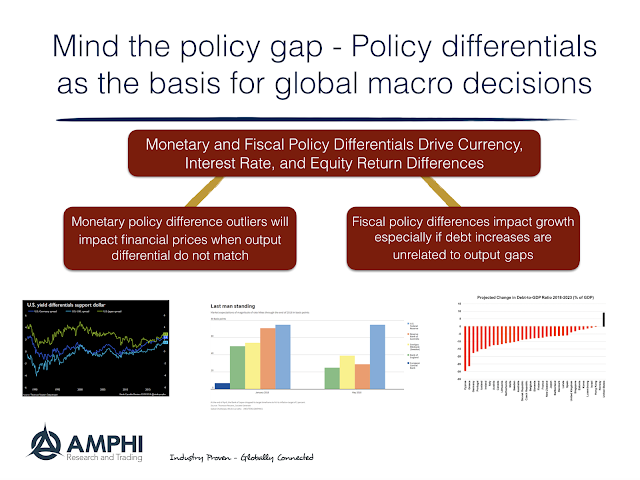Simple frameworks are effective with global macro investing. They set the tone for discussion and focus attention on the big issues. Look at the monetary/fiscal policy mix across countries to get a good feel for macro imbalances. These imbalances tell us something about current growth and future policy. Policy gaps are intended to close output gaps.
There will be a divergence in price trends when there are divergences in policies. If there is a wide policy gap, there will be the potential for wider divergences in global price differentials. When there are larger price differences, currencies which are relative prices will also move.
Of course, these divergences will not last forever, albeit they may often let longer than expected. When expectations change concerning the direction of the gap, there will be a “crash” in trends. This is a basis for momentum crashes.
Nevertheless, policy divergences are a current foundation for investor tilts in a global portfolio. This is especially true when the policy gap does not match output gaps. If there is no output gap to match the policy gap, the differential will play out in capital flows and excess price moves. For example, assuming the output gaps are similar, a tightening or rising rate environment will lead to currency appreciation. If there is an increase in deficits or a debt to GDP gap relative to other countries, there will be upward pressure on growth, currency appreciation, and further pressure on rates.
The US is reversing QE which may not be having a strong credit tightening effect just yet, but will have upward pressure on rates and currency versus countries that are still following QE. Similarly, there will be rate, currency, and equity pressure if debt to GDP is growing versus other countries where it is falling.
These pressures do not define the movement of financial prices but provide a prior or conditional view of what should happen. The investors know has to find a better alternative story to fit the facts or follow this trend in policy differentials.


